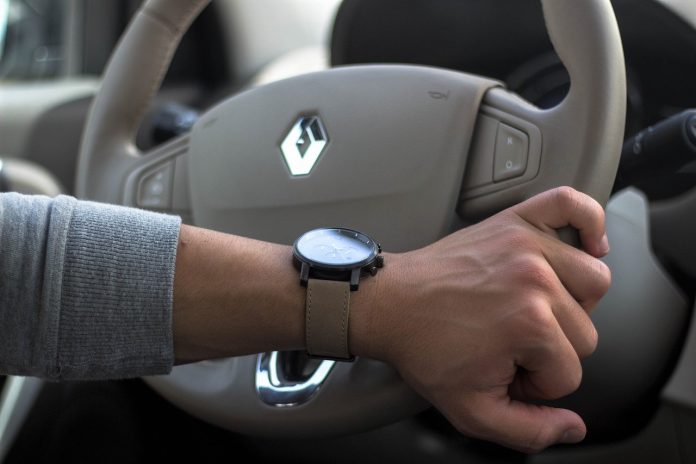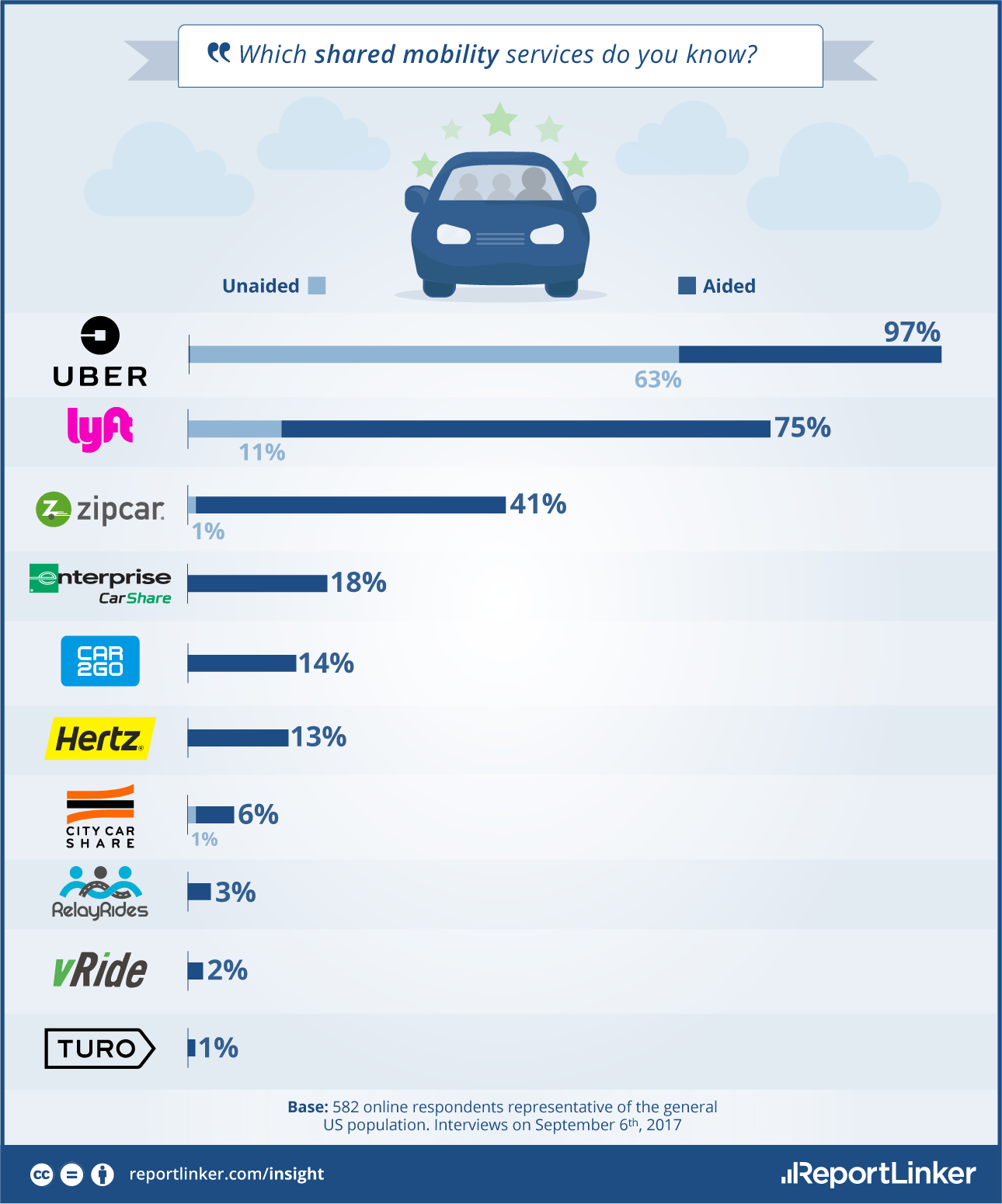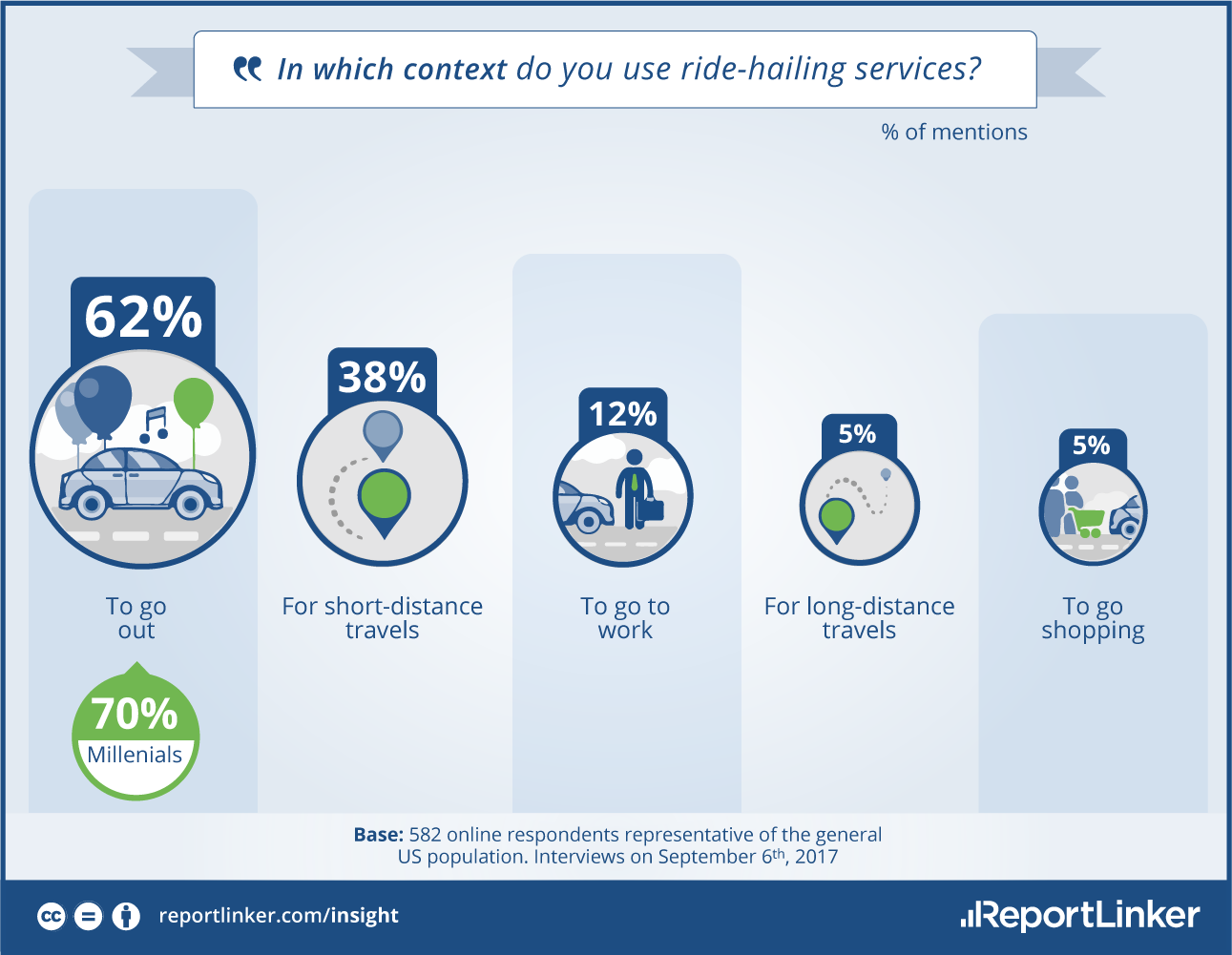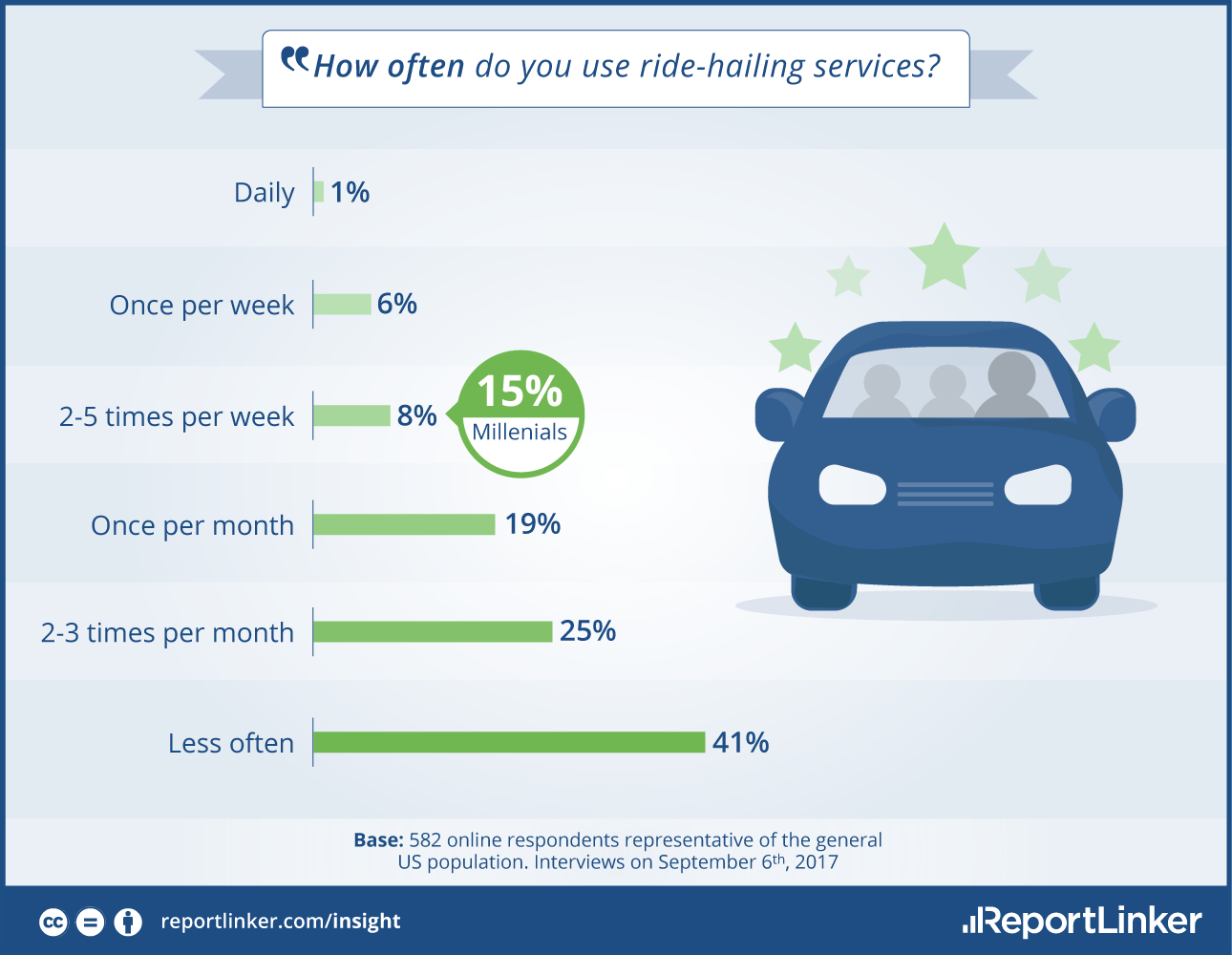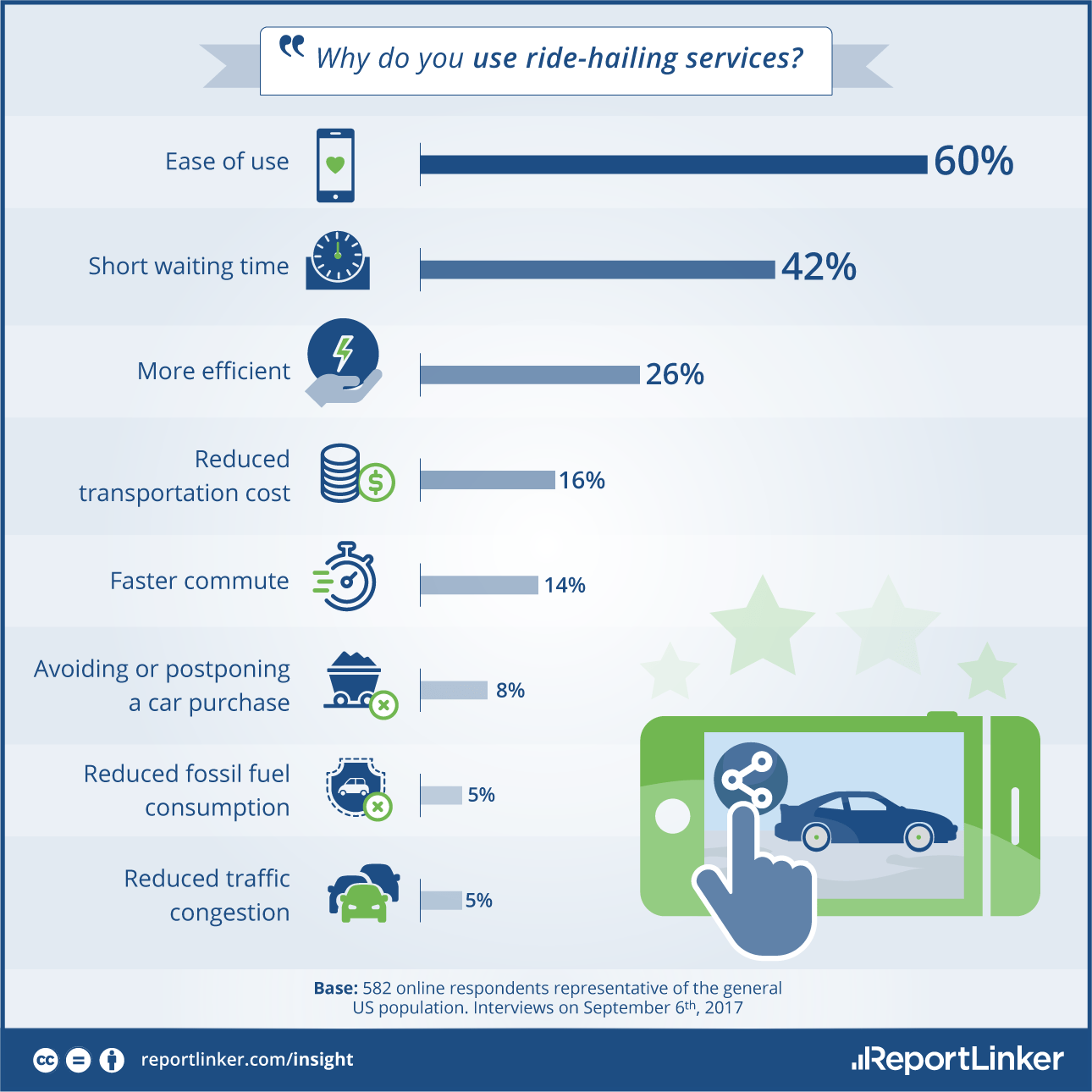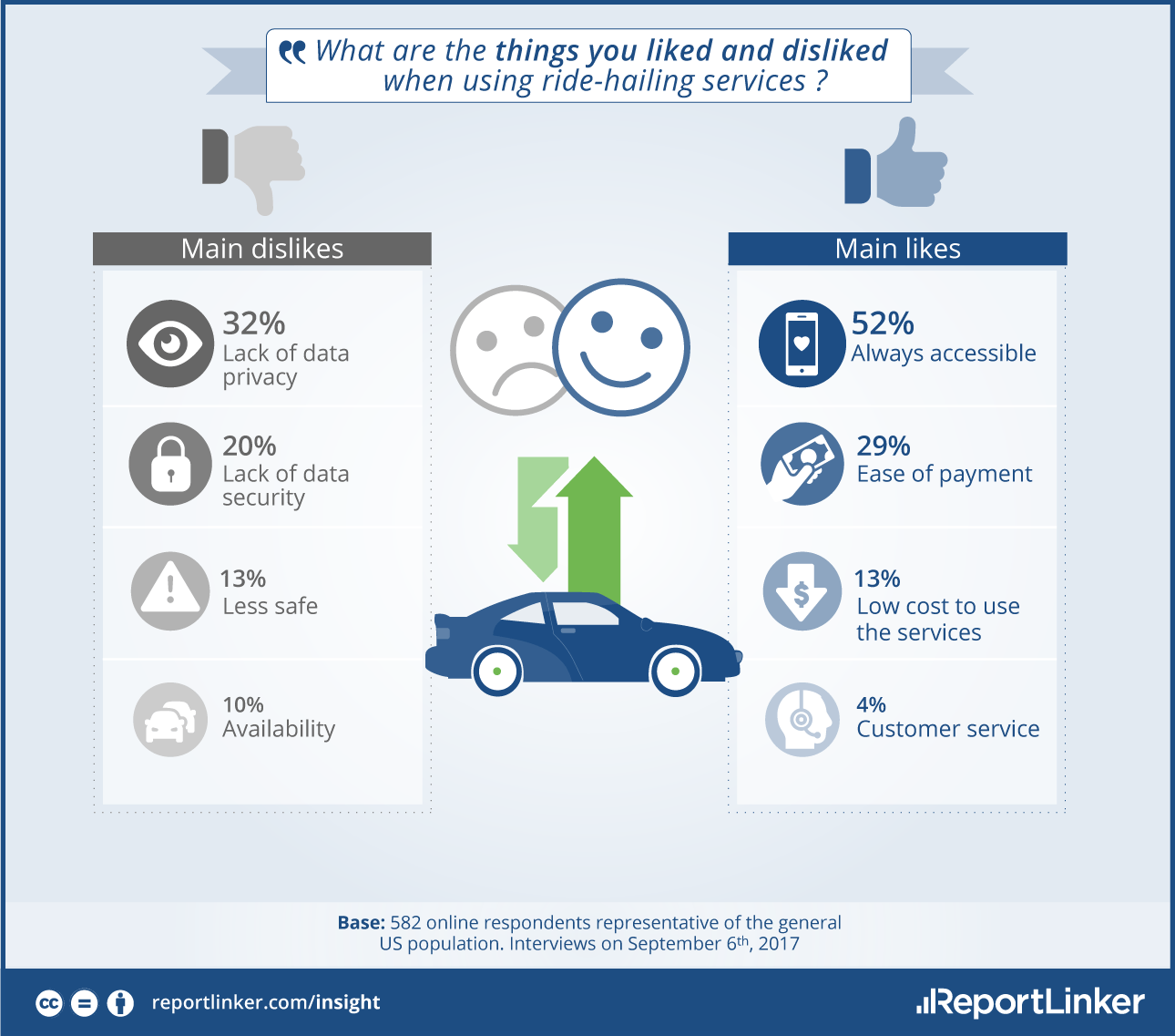Car-sharing technology and service options have come a long way since Zipcar began in the year 2000. Today, it’s Uber, in spite of the company’s growing pains in 2017, leading the way. According to recent research published by ReportLinker involving 582 online US respondents, ride-hailing services (with Uber’s easily number one) are far and away the most popular form of modern car-sharing. Eighty-nine percent of respondents have used ride-hailing, while less than 10% have used ride-sharing.
Unlike traditional car-sharing (which is simply leasing an automobile by the day or the hour), ride-hailing services are currently disrupting the cartel-like taxi services and have found great favor with Millennials, who as a group are always up for engaging with new technologies. Of all shared mobility services (which include ride-sharing—like carpooling—and bike-sharing, which is just like car-sharing except done with bicycles), Uber (known by 97% of respondents), Lyft (75%), and ZipCar (41%) are people’s favorites.
Millennials are heavily into ride-hailing services, much more than previous generations. When going out socializing, they use ride-hailing services 70% of the time. (Clearly, many of these Millennial respondents live in urban areas.) What’s more, 15% of Millennials use ride-hailing services multiple times per week, some up to five times per week.
These modern ride-hailing services are so attractive to Millennials because they appeal technological savvy, plus they are convenient and cost-effective in the sense that these young people don’t need to worry about acquiring, financing, maintaining, and parking their own vehicles. (Some urban Millennials may not even care about going through the trouble of getting a driver’s license with such technology and services available to them.
Indeed, the leading reasons given for using ride-hailing services in contrast to the other, similar services previously mentioned are convenience or ease of use (60%), short waiting time (42%), efficiency (fewer steps involved in the process) (26%), and reduced transportation cost (16%). However, with regards to transportation costs, a November 2016 ReportLinker survey on the same topic had 34% of respondents citing that as their leading reason for using ride-hailing. Perhaps costs have gone up, or it may be that people have become less concerned with cost and more interested in the other most-cited advantages.
While ride-hailing services are highly praised for their availability, some concerns still remain in riders’ minds. Foremost is personal security, especially with so many database hacks and personal information breaches in the digital age. Still, ReportLinker found that on a five-star scale, US consumers give Uber a very high average rating of 4.31.
Because younger adults are more and more heavily into modern ride-hailing and other shared mobility services driven by technology, automobile manufacturers are looking to get in on the action. What they are developing are, of course, self-driving cars with onboard AI that would enable their owners to send the car around doing errands and picking up or dropping off people (such as family members or friends) without needing to leave their home or office. Likely, one day there will be an AI-driven Uber car coming to pick you up.
Find a Home-Based Business to Start-Up >>> Hundreds of Business Listings.











































